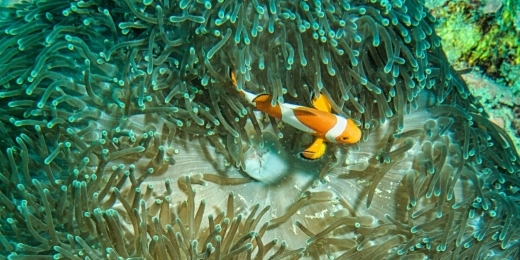
Biodiversity: What it is and why it is important
The second-most effective way of mitigating climate change, after fossil fuel replacement1
Biodiversity reflects the number, variety and variability of living organisms. It includes diversity within species, between species and between ecosystems. Biodiversity is found everywhere, both on land and in water. It includes all organisms, from microscopic bacteria to the most complex plants and animals. Consequently, biodiversity is vital for the planet's sustainability.
Unfortunately, global biodiversity is undergoing a drastic decline. In 2019, the Intergovernmental Platform on Biodiversity and Ecosystem Services (IPBES) released a report showing that around one million species are at risk of extinction, many within a matter of decades.
-
$10tn
biodiversity-related risk to the economy by 20502
-
50%
of world GDP ($13tn) produced by industries that depend on nature3
-
70%
of cancer medicines are obtained from organic substances and/or derivatives4
Key tool for mitigating climate change
Forests, wetlands and grasslands are natural carbon sinks that absorb and store CO2. Protecting and restoring these ecosystems is considered to be the second-most effective solution to climate change, behind only fossil fuel replacement.
We've reached a turning point
Human activity has seriously altered 75% of the planet's land surface and 66% of the marine ecosystem. The average population of species declined by 68% between 1970 and 20162.
The role of finance
Companies and investors have practically ignored this problem until now. We face a global biodiversity funding gap of over $800 million6 per year, and the financial sector can play a key role through capital allocation and stewardship.
Impact on the economy
Studies suggest that more than 50% of the world's GDP depends, to a greater or lesser extent, on nature5. Failure to respond could lead to the collapse of food systems and loss of livelihoods, and pose a systemic risk to the global economy.
Within the Agenda 2030 strategy, Europe plans to restore 25,000 kilometres of rivers, plant 3 billion trees, reverse the decline of pollinating insects, reduce the use of harmful pesticides by 50%, and increase the size and number of organic farms. To achieve this, private and public funds will provide €20 billion per year7.
1 https://www.hermes-investment.com/es/es/professional/investments/equity/biodiversity-equity/
2 WWF Living Planet Report 2020
3 Federated Hermes Fund Presentation Q42022.
4 Paun, A. (2020). “Biodiversity in the balance”. Global ESG Research, HSBC, 17 Jun 2020
5 Sources: IPBES reports (2019), EOS, Our Commitment to Nature (2021), WWF and ZSL, Living Planet Report (2020), Seven ESG Trends to Watch in 2021 | S&P Global (spglobal.com)
6 Global Canopy, The Little Book of Investing in Nature (2021)
7 https://www.bbva.com/es/sostenibilidad/que-es-la-biodiversidad-y-por-que-es-clave-para-la-supervivencia-de-los-seres-vivos/
Important Legal Information
This document has been prepared by Banco Santander, S.A. ("Santander") for information purposes only and is not intended to be, and should not be construed as, investment advice, a prospectus or other similar information material.
This material contains information compiled from a variety of sources, including business, statistical, marketing, economic and other sources. The information contained in this material may also have been compiled from third parties, and this information may not have been verified by Santander and Santander accepts no responsibility for such information.
Any opinion expressed in this document may differ from or contradict opinions expressed by other members of Santander. The information contained in this material is of a general nature and is provided for illustrative purposes only. It does not relate to any specific jurisdiction and is in no way applicable to specific situations or individuals. The information contained in this document is not an exhaustive and formal analysis of the issues discussed and does not establish an interpretative or value judgement as to their scope, application or feasibility. Although the information contained in this document has been obtained from sources that Santander believes to be reliable, its accuracy or completeness is not guaranteed. Santander assumes no responsibility for the use made of the information contained herein.









